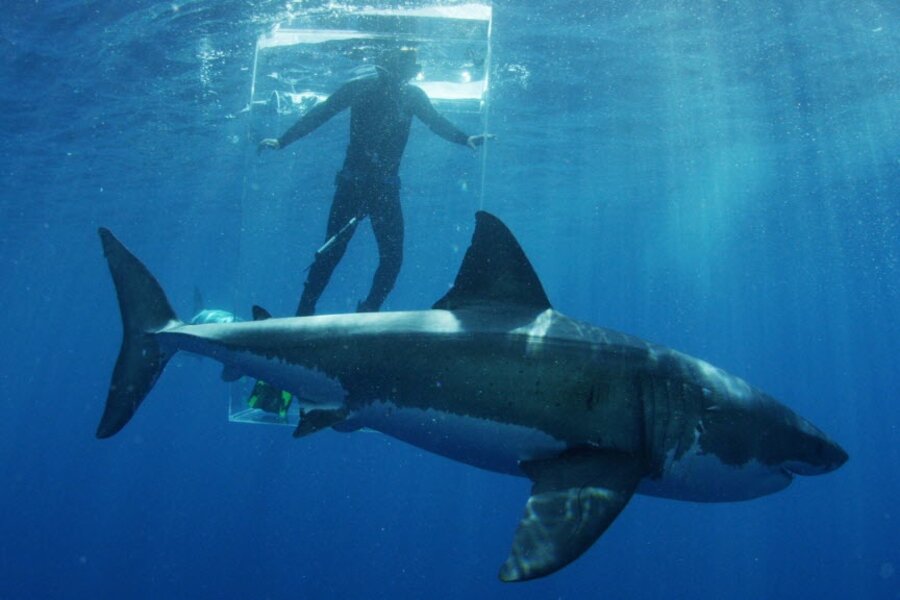US, Cuba find something to agree on: protecting sharks
Loading...
Cuba and the United States, it is safe to say, have not always been the friendliest of neighbors. But a recent plan to preserve Cuba’s shark population has brought the longtime rivals together.
Of the world’s 500 various shark species, 100 are thought to swim in Cuban waters.
Their numbers are dwindling, however, thanks to overfishing and a hot demand for shark fins. In the Gulf of Mexico, some shark populations have declined by more than 90 percent, prompting the governments on both sides of the Straits of Florida to take action.
“This is an ecological red flag because sharks, as top predators, are essential to healthy coral reefs, marine food webs and coastal communities,” wrote the Environmental Defense Fund.
In what could be the first tangible step in improving US-Cuban relations since President Obama and Raul Castro shook hands a year ago, Cuba is teaming up with a US environmental group to implement a long-term plan to preserve the island's shark population. While Cuba has already banned harvesting sharks for their fins, the plan aims to record shark catches by fishing vessels and impose more stringent rules to protect shark nurseries and to rebuild the shark population.
The move comes after 50 years of animosity between the the two nations, one that involved a CIA-backed invasion of the island in 1961, followed by a tense nuclear standoff the following year. President John F. Kennedy issued an embargo on all Cuban exports – a five-decade-long move that some estimate to have amounted to close to $1.1 trillion.
When President Obama came into office, he reversed many of the restrictions set by his predecessor, George W. Bush. While the move was aimed to aid Cuba’s economy, the most immediate reform has been environmental.
“That voyage opens the possibility of deeper relations in the future,” Julio Baisre, a marine scientist and vice-director of the Cuban National Aquarium told the AP. “We’re hopeful, we’re open to it. I think there are many ways in which we can work together.”
Cuba is one of the only countries in the Caribbean to have virtually untouched wild landscapes – a reputation the 11.2 million-person country hopes to maintain.
“Cuba is considered the crown jewel of the Caribbean, principally because of its incredible coral reef ecosystems, its mangroves, its seagrasses,” Daniel Whittle, the Cuba program director, told the BBC. Whittle is part of a small team of Cubans that has been working with the US Environmental Defense Fund for the past two years. Protecting the shark population is their first call to action.
“The environment is the lowest-hanging fruit,” Whittle added. “It’s in our national interest when Cuba protects its resources.”
According to the EDF, the move should also help reign in ecotourism for Cuba, which has already seen an influx of American tourists since opening its borders.





